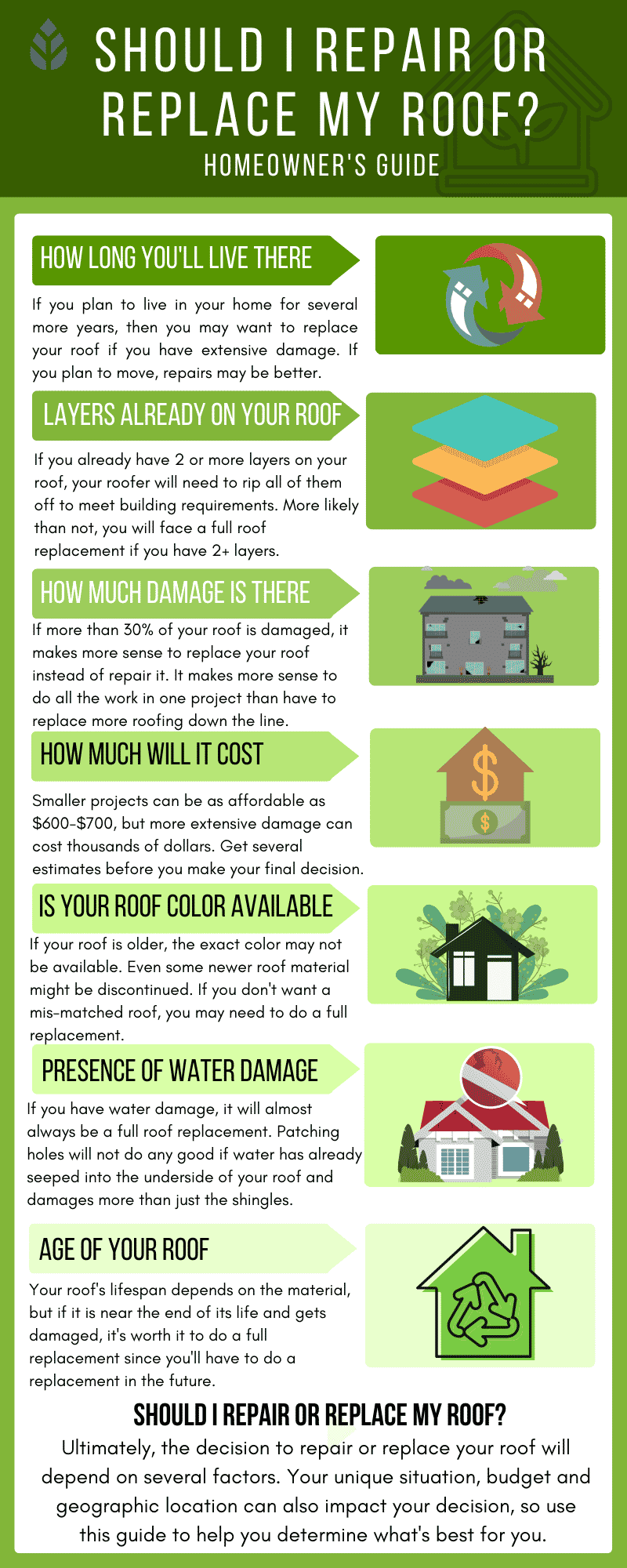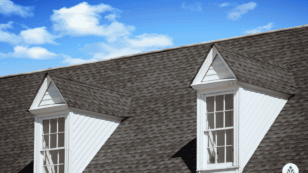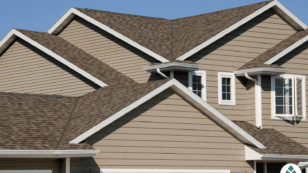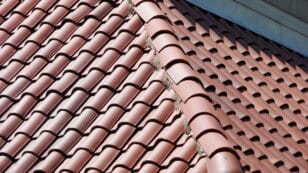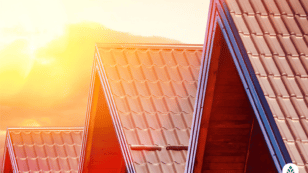
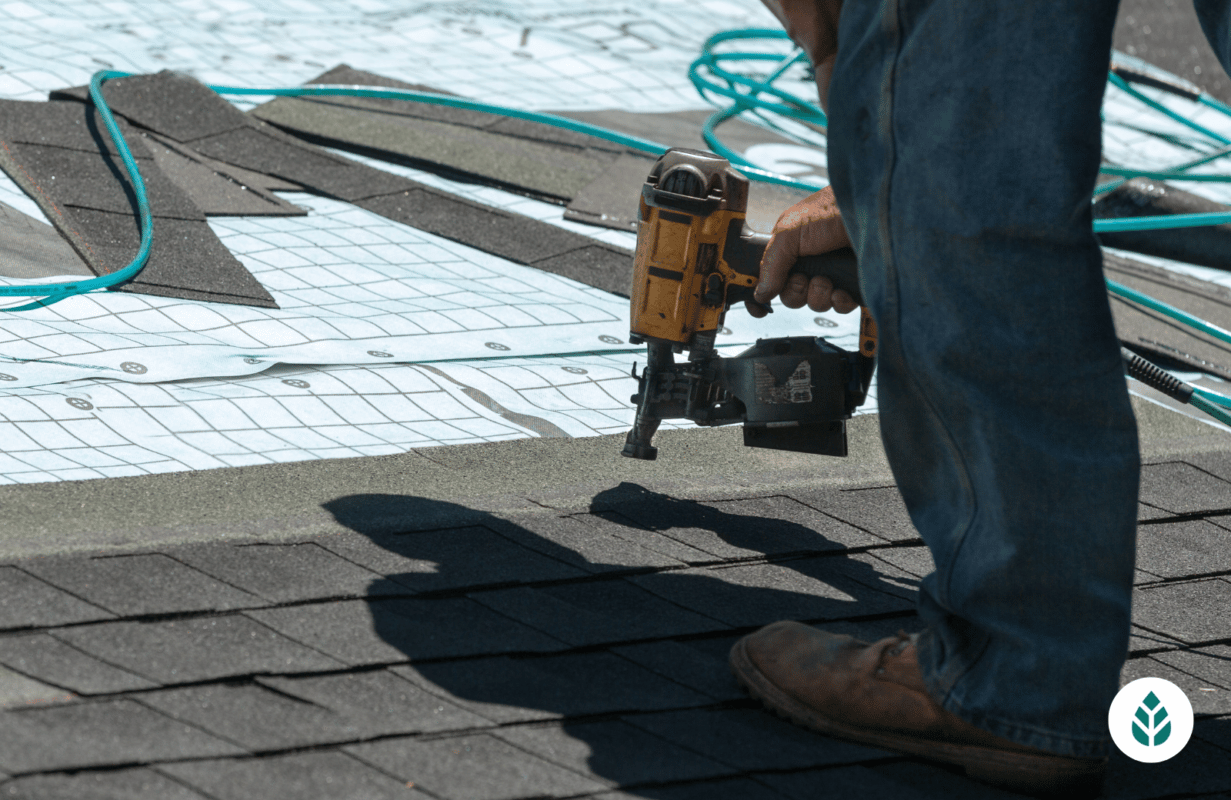
Rubber Shingles Cost and Homeowners Guide (2024)
Average Rubber Shingle Roof Cost: $12,750 – $24,750
- Rubber shingle roofs are known for their durability and resistance to cracking
- They’re also energy efficient and provide excellent insulation
- The cost for a rubber shingle roof is between $4.25 and $8.25 per square foot in the U.S.
This EcoWatch guide to rubber shingle roofs has helped thousands of homeowners like you find a roofing material that meets their needs.
Each product and or company featured here has been independently selected by the writer. You can learn more about our review methodology here. If you make a purchase using the links included, we may earn commission.
Rubber shingles are an affordable roofing option that offer a sleek roof design. Made from recycled materials, rubber roofing shingles are the perfect blend of environmental friendliness and energy efficiency. These shingles are known for their insulating properties, so a rubber shingle roof will help you save money on your electricity bills.
Rubber has become a popular roofing material due to its toughness, ability to withstand temperature extremes and resistance to rotting and cracking. You can install light-colored rubber shingles to reflect the sunlight and even replace your current roof using rubber shingles while adding solar panels.
Rubber roofs can be configured as sloped or flat roofs, so homeowners have plenty of creative freedom in their roof design. The total cost of your roof replacement will depend on what’s available in your area, so it’s best to find a local contractor to get the most accurate estimate.
Cost of Installing a Rubber Shingle Roof
Rubber shingle roofs typically cost more than traditional asphalt ones but less than roofs made with other premium materials such as metal and clay. For materials alone, you can expect to pay between $4.25 and $8.25 per square foot of rubber roof shingles. This range is a good starting place, but your actual costs will depend on your roof’s size, slope and pitch.
Rubber roof shingles may cost more than asphalt ones, but they are much cheaper to install. Homeowners will also save money over time with rubber roofing because its lifespan is longer than that of other roofing materials.
Just because rubber roofing is easier to install than asphalt, though, doesn’t make it a good choice for a DIY project. It should be installed by trained roofing professionals to avoid cracks, roofing membrane shrinkage and expensive repairs.
How to Calculate the Cost of Your New Rubber Shingle Roof
Although it won’t give you a precise estimate, there is a simple way to get an idea of the cost of a new rubber shingle roof. Just multiply your roof’s square footage by the cost per square foot of the rubber roofing material, as shown below:
Roof square footage x cost per square foot cost of rubber shingles = roof estimate
This calculation will give you a ballpark estimate of your shingle costs — but for a more inclusive figure, you’ll need to factor in other required materials, labor and the removal of old shingles, if applicable. For the most accurate cost of a rubber shingle roof in your area, contact a professional for a free quote.

Power Home

Average cost
Pros
- Positive industry reputation
- Lifetime or lengthy warranty
- 10+ years of experience
- Positive customer reviews
- Uses eco-friendly materials
- Well-trained, certified installers
- Variety of roofing styles available
Cons
- Limited variety of roofing materials
- Short or nonexistent warranty
- No financing information available
- Expensive
- Little information available on company website

Erie Home
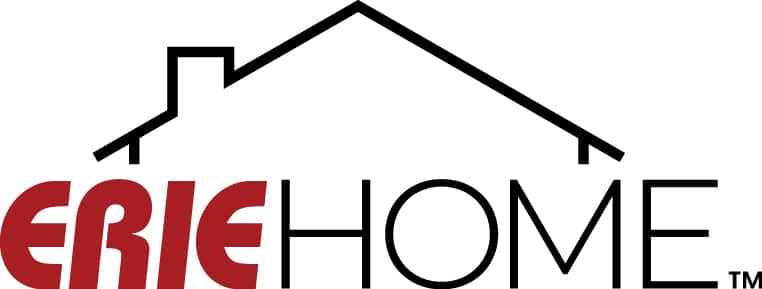
Zero Down - 18 months same as cash with minimum monthly payment
Average cost
Pros
- Lifetime or lengthy warranty
- Widespread availability
- 10+ years of experience
- Positive customer reviews
- Uses eco-friendly materials
- Financing options available
- Well-trained, certified installers
- Uses durable materials meant to last
- Variety of roofing styles available
Cons
- Limited variety of roofing materials
- Expensive

Aspen Contracting

Average cost
Pros
- Positive industry reputation
- Lifetime or lengthy warranty
- Widespread availability
- 10+ years of experience
- Positive customer reviews
- Financing options available
Cons
- Little information available on company website
Factors That Go Into Rubber Shingle Roof Pricing
The exact cost of your rubber shingle roof will be determined by a number of factors:
- Your costs for rubber shingles and other needed materials
- Labor rates and time required to complete the installation
- Costs to remove your current roof, including dump fees
- Size and complexity of your roof
Material Pricing for Rubber Shingle Roofs
Materials needed to install a rubber shingle roof include more than just the shingles themselves. These additional materials include:
- Ice and water shield
- Underlayment
- Seam probe tools
- Membrane adhesive
- Seam tape
- Cleaning solution
- Roofing rollers
- Roofing brush
- Insulation
The cost of these materials will depend on your location and the specifics of your particular installation project.
Cost of Protective UV Sealant for Rubber Shingle Roofs
UV sealant is especially important for rubber roofs because it provides protection from the sun and severe weather. At between $15 and $30 per gallon, sealant is not highly costly, but the cost of labor to apply it can be as much as $0.50 per square foot.
Basic Labor Cost and Time to Complete Rubber Shingle Roof Installation
Rubber shingle roof installation involves two major cost factors besides materials: labor and time.
Labor costs vary by the contractor and region where you live, as well as the crew members’ skill levels. Obviously, the more time it takes to complete your rubber roof installation, the more labor costs you’ll incur and the higher your total cost will be. Factors that can add time include whether you need to remove your old roof and your roof’s size and complexity.
Removing Your Current Roof and Dump Fees
Taking off an old roof isn’t necessary for all new roofing projects, but if you have two or more layers of roofing already installed, your roofer will need to remove the old material before new installation can begin. Not only does this extra step take more time, but you’ll also incur costs for trucks and dumpsters to haul the old roofing away.
Removal costs can raise the total cost of your project significantly, and many homeowners are unprepared for these extra fees. If you’ve replaced your roof in the past, you’re probably aware that you may have to include this additional step and related costs.
Size and Complexity of Your Roof
The bigger and more complex your roof, the more it will cost to install your rubber shingles. Complex roofs might have different tiers, skylights and ventilation features among other characteristics that make installation more difficult and time-consuming. The harder it is for the roofing crew to access and work on different areas of your roof, the more time it will take and the higher skill level it may require, potentially raising your overall total.
Pros and Cons of Installing a Rubber Roof
When you install a new roof, it’s always important to research your options so that you choose the roofing material that is right for your home. Along with browsing the various types of roofs, make sure you check out our recommended roof installation companies to get a no-obligation free quote.
Advantages of Rubber Shingle Roofs
- Withstand extreme weather conditions
- Durable and long-lasting
- Offer hurricane protection
- Lightweight compared to other materials
- Pest and fire resistant
Disadvantages of Rubber Shingle Roofs
- Strong smell
- Susceptible to black mold
- Require regular cleaning and maintenance
- Need protective UV sealant to avoid color fading
Lifetime and Durability of Rubber Shingles
Rubber shingles have a lifespan of between 15 and 30 years and are suitable for all climates. Even though these roofs are durable and overall low-maintenance, they do require regular cleaning. Homeowners are encouraged to inspect their roofs at least three to four times a year. This will not only help maintain your warranty, but also protect your roof.
As we mentioned above, rubber roofs are susceptible to certain types of black mold and color fading. If homeowners don’t regularly clean their rubber roofs, mold spots can grow and cause significant damage. To protect against UV rays and color fading, homeowners should apply a protective UV sealant.
Are Rubber Shingles Roofs Environmentally Friendly?
Because rubber roof shingles are made of 95% recycled materials including recycled rubber, plastic sawdust and slate dust, rubber roofing is typically an eco-friendly option. Rubber roofs are also excellent surfaces for solar panel systems.
To increase your rubber roof’s energy efficiency, you can invest in white or light-colored rubber roofing instead of more traditional dark colors. These lighter colors are more energy efficient because they are resistant to UV rays and reflect heat.
Financing Your New Rubber Shingle Roof
Instead of paying out of pocket for a rubber shingle roof, most homeowners finance their projects. Your local contractor may have preferences for roof financing, but some of the most common options include:
- Home equity loan
- Home equity line of credit
- Cash-out refinance
- FHA loans
- Personal loans
- Contractor loans
- Credit card
- Cash
Most rubber shingle roofs come with a 30-year warranty, so it’s always a good idea to check with your provider before you purchase. Weatherization assistance programs, single-family home repair schemes, house preservation programs and other forms of government assistance are also available for low-income homeowners in need of a new roof1.
The ROI of Your Rubber Shingles Roof
According to Zillow, a new roof can increase the value of your home2. Even though you won’t see a 100% return on investment (ROI), you will see at least 60% to 70% ROI if you decide to sell your home soon after a roof replacement. A new roof is a great way to attract potential buyers because not many aspiring homeowners relish the prospect of needing to replace the roof immediately or in the near future.
Costs of Maintenance and Repairs for Rubber Roofs
If your rubber shingle roof is damaged, the cost of repairs will depend on the extent of the damage. If you catch it early, the cost to fix a small leak or crack can be as little as $150. More extensive repairs, such as fixing electrical failures, water damage, underlayment issues or color fading can cost upwards of $7,000 and even require a complete roof replacement.
Rubber shingles are similar to traditional roofing in that they are prone to problems if not installed correctly. Some of the most common problems associated with rubber roofing material include:
- Improper installation around corners, walls and drains
- Color fading if exposed to strong UV rays
- Roofing membrane shrinkage due to faulty installation
- Leaks
- Black mold due to lack of cleaning
Roof Painting Prices for Rubber Shingles Roofs
While a new rubber roof can cost over $12,000, the cost to paint your existing rubber roof is significantly less. The minimum price is around $1,000, but the actual cost of painting your rubber shingle roof will vary depending on the size and complexity of your roof as well as the cost of labor in your region.
When painting your rubber roof, the roof must first be cleaned and prepped. Because many rubber roofs are black or gray, a new color may require more than one coat. It’s also highly recommended to invest in UV sealant for your rubber roof to prevent the color from fading — this can cost anywhere from $500 to $2,000, including application.
Costs of Cleaning your Rubber Shingle Roof
DIY homeowners can opt to clean the grime off their rubber roof themselves, or they can hire a professional cleaning company for between $250 and $650 depending on your roof’s size. It’s important to clean rubber roof shingles to prevent mold, but it’s equally critical to clean your gutters, as these are necessary to prevent water damage.
The type of gutter you choose to complement your rubber roof depends on where you live. Rubber shingle roofs are versatile and can be installed in both warm and cold climates, so you have more flexibility in your gutter choice. However, many homeowners go with PVC gutters due to their smooth appearance and scratch resistance.
Are Rubber Roofs Worth the Cost?
Rubber roofing is a cost-effective, durable option for homeowners across the U.S. Not only are these roofs pest and fire-resistant, but high-quality rubber roofing is perfect for solar panel installation and is energy efficient to boot.
Rubber roof costs can be on par with those made of other materials, such as metal and asphalt, but some types of rubber roofs may cost more. Because rubber roofs have a long lifespan and are low maintenance, rubber roofing is definitely worth the cost of installation.
FAQ: Rubber Shingle Roof Cost
Rubber roofs are worth the investment because they are energy efficient, affordable and simple to repair. These roofs have a great lifespan and typically come with a 30- year manufacturer’s warranty. Some types of rubber roofs can be more costly than roofs made of other materials, but their benefits are worth the extra cost.
Homeowners will have no problem with the installation of solar panels on a rubber roof. Rubber roofs can be either sloped or flat, and both types can support solar panel systems.
Most rubber roof materials are more durable than traditional asphalt shingles. The most durable rubber roof materials are ethylene propylene diene monomer (EPDM) and modified bitumen. Both of these types of rubber are durable and great for use on homes.

 233k
233k  41k
41k  Subscribe
Subscribe 
